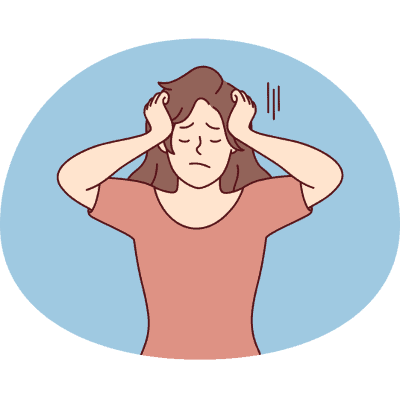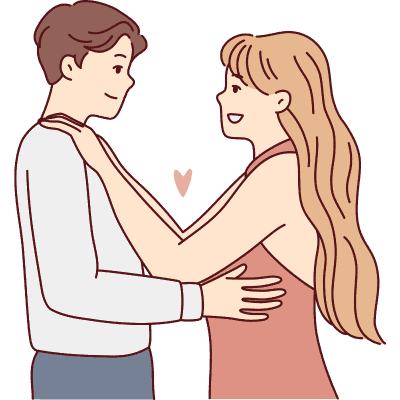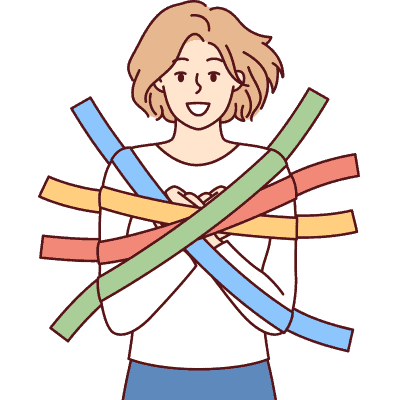Have you ever thought about why you react a certain way in relationships? Doesn’t matter if it’s with friends, family, or romantic partners, the way we connect (or struggle to) is in no way random. It’s origin comes from something really interesting—our individual attachment styles.
These are the ties that bind us, and we are going to go over them all. We’ll also look at attachment theories, the different styles, why they matter, and how you can find out what yours is!

The Basics of Attachment Styles
The concept of attachment styles came about from the work of psychologists John Bowlby and Mary Ainsworth, who studied the bonds between infants and their caregivers. Their findings laid the foundation for understanding how these early interactions influence our relationships later in life. Basically, there are four main attachment styles:
- Secure Attachment: This is the gold standard of attachment styles. Securely attached people have a positive view of themselves and all of their relationships. They’re comfortable with intimacy, can depend on others, and aren’t afraid to be alone. Sounds lovely!
- Anxious Attachment: If you find yourself constantly worried about your relationships, craving closeness, but fearing it might not be reciprocated, you might lean towards an anxious attachment. Anxiously attached people seek approval and reassurance from their partners, always fearing they’ll be abandoned at any given moment.
- Avoidant Attachment: Do you like your independence a little too much? Those with an avoidant attachment style love their self-sufficiency so much that they tend to push others away. They struggle with getting too close and often equate intimacy with a loss of their independence.
- Fearful-Avoidant Attachment (Disorganized): This one is a mix of anxious and avoidant styles. People with a fearful-avoidant attachment are caught in a cycle: they want close relationships but are afraid of getting hurt. The results? A love-hate push-pull relationship with intimacy, both emotional and physical.

How to Pinpoint Your Attachment Style
Figuring out your attachment style isn’t about taking one of those Buzzfeed quizzes and calling it a day—you have to have introspection and insight into your behavior. Here are a few steps to get you going in the right direction:
- Look At Your Relationship Patterns: Think about your past and present relationships. Do you spot a pattern in how you relate to others?
- Consider Your Reactions to Emotional Intimacy: Do you welcome it, run from it, or find yourself stuck in a love-fear paradox?
- Analyze Your Feelings About Dependence: How comfortable are you relying on others? This can be a telltale sign of your attachment style.
- Journaling: Writing down your thoughts and feelings can help uncover lots of insights into your relationship dynamics.

Why Your Attachment Style Matters
Understanding your attachment style isn’t about boxing yourself into a category—it is meant to help you get better insights so you can build healthier connections. Here’s why it’s important!
- Improves Self-Awareness: Knowing your attachment style can shed light on why you act the way you do in relationships.
- Helps Relationship Quality: By understanding your needs and fears, you can communicate better and build stronger bonds.
- Facilitates Growth: Recognizing unhealthy patterns gives you the power to change them, enabling personal and relational growth.
Are Any Attachment Styles Red Flags in Romantic Relationships?
Okay, so knowing your attachment style is one thing—but are any of them harmful or considered to be big red flags in romantic relationships? The answer is no! But they can help you better spot things that could turn into red flags. Each style (except for the secure attachers—they’re fine, and lucky them) has their own traits and behaviors to keep an eye on.

Anxious Attachment Red Flags
- Overdependence: A partner overly reliant on the relationship for their self-worth can place a hefty emotional burden on the other.
- Clinginess: Constant need for reassurance and affection might feel suffocating.
- Jealousy: Anxiously attached individuals may interpret independence as indifference, leading to unwarranted jealousy.

Avoidant Attachment Red Flags
- Emotional Distance: A partner who keeps you at arm’s length emotionally might prevent the relationship from deepening.
- Commitment Issues: Avoidants may shy away from commitment, making long-term planning challenging.
- Independence Over Intimacy: Their high value on independence might lead to neglecting the relationship’s needs.

Fearful-Avoidant Attachment Red Flags
- Unpredictability: The push-pull dynamic of wanting closeness yet fearing intimacy can create a turbulent relationship.
- Trust Issues: Difficulty in trusting partners fully can severely hinder the building of a solid foundation.
- Emotional Ups and Downs: The internal conflict between craving affection and fearing hurt can lead to erratic behaviors.

Navigating Attachment Styles in Relationships
While these red flags sound scary, they’re in no way insurmountable. Recognizing them is the first step towards fostering a healthier relationship. Communication plays a huge part here—openly talking about your needs, fears, and expectations can bridge any gaps and soften the hard edges.
If you or your partner identify with any of the red flags mentioned above, here are a few tips:
- Self-awareness and Honesty: Acknowledge your attachment style and its impact on your relationship.
- Get Support: Professional counseling or therapy can offer strategies to develop a more secure attachment.
- Patience and Understanding: Building a secure foundation takes time, especially when working through attachment issues.

Can You Change Your Attachment Style?
Um, yes, and no—while our attachment style is influenced by early experiences, it’s not set in stone. Through self-reflection, therapy, and healthy relationships, it’s possible to develop a more secure attachment style. But you have to be willing to do the work by pinpointing and addressing your fears and needs.
Takeaways
Attachment styles aren’t just an academic exercise—it’s a great path to self-discovery that can better our lives and relationships! By understanding how we form bonds, we unlock the power to create and maintain much more meaningful connections. So, what’s your attachment style? And, more importantly, how will you use this knowledge going forward?
The goal is not to change who you are, but to understand and grow from it. Whether you’re snugly secured or trying to handle anxious or avoidant attachments, there’s always time for a little bit of reflection and to make any changes if you can—and want to.




